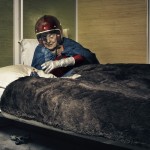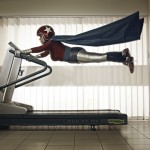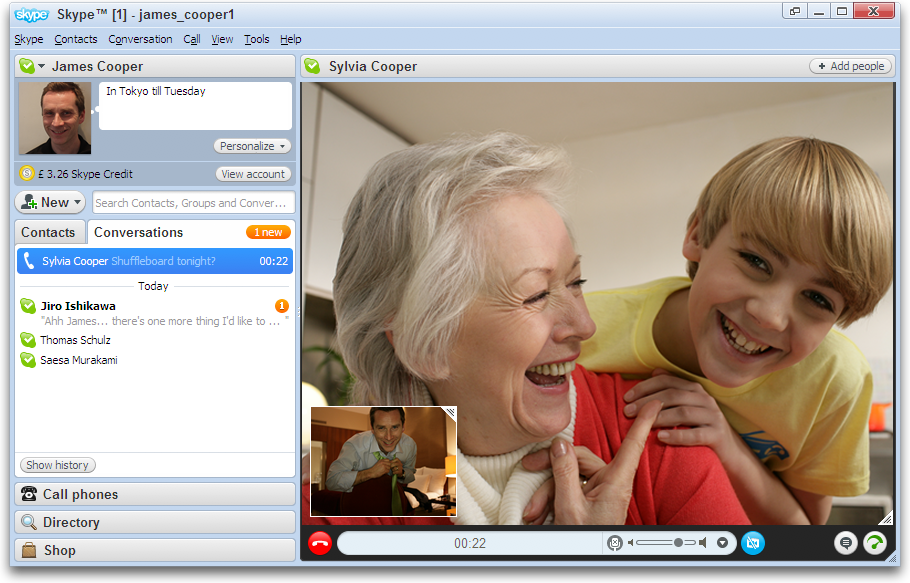Many injuries for seniors occur in the bathroom, which is not surprising, given the mix of water with slippery surfaces. We have put together a list of helpful tips and products that will make the bathroom safer and help prevent falls and injuries before they happen.
The items below can all be used in your current bathroom and do not require any bathroom remodeling. These innovative product choices will allow you to design the bathroom that best fits your safety needs.
Raised toilet seats help with allowing you to stand up and sit down more easily and comfortably. This is especially important if you have difficulty with mobility, such as arthritis in your knees or other leg impairments. These Elevated Toilet Seats install on your existing toilet bowl and add anywhere from 2” to 6” in height, making sitting and standing much easier. Since the standard height of a toilet is usually only about 15” high (with some ADA models now available at 17”), this extra height can be very helpful.
Choosing the Size
There are a couple of considerations before purchasing a raised toilet seat. You will first want to make sure of which size toilet you have. This is the #1 consideration, because if the toilet seat doesn’t fit, you can’t use it! Standard toilets in the United States are typically found in 2 sizes, Standard (Round) or Elongated (Oval). To determine your toilet size, measure from the center of the seat bolt holes in the back of the toilet to the outside front of the bowl. The measurement of a Standard size toilet is generally around 16-1/2” Long. An Elongated (oval) Toilet is approximately 18-1/2” Long.
Choosing the Height
Raised Toilet Seats are available in several height options from 2” to 6”. The height of the toilet seat riser will depend up on the height of the individual. An average height person should be good with a riser between 3”-4” on average. For a taller person, a 6” height might be more appropriate and for a shorter person a 2” height might be all that is needed. We are not aware of any toilet seats great than 6” in height mainly due to safety reasons; however, if you find that you do need 8”-9” of additional toilet seat height, you can combine a raised toilet seat with a toilet base riser to obtain the needed height.
Choosing Installation Features
Most raised toilet seats are constructed of a durable plastic material and are offered in a variety of different options for installation. Do you need to remove the raised toilet seat more quickly and easily on a regular basis in a shared bathroom or will the seat be used for travel? If either of these is true, you will most likely benefit from a raised toilet seat that does not require any tools for installation. There are several types that simply slide into the rim of the toilet seat bowl and do not provide any locking options. This is fine for those that are slightly more mobile and stable. There are also several models available that install in the same manner, but also include a frontal turn knob to lock the seat in place on the rim to help prevent movement of the toilet riser.
If you will not need to remove the toilet seat on a daily or regular basis, then it is recommended to purchase a raised toilet seat that installs with tools and bolts in the back of the toilet. These types of raised toilet seats will be the most secure and are recommended for those that require additional stability. They will almost always include the extra long bolts that install on your toilet in the exact same way as a regular toilet seat and lid. Most standard U.S. toilets include bolt holes that are 5-1/2” apart and most bolt down model raised toilet seats do adjust for a proper fit.
One of the biggest concerns with raised toilet seats that provide a more permanent bolted installation is “How easy are they to clean?” and “What if my husband will be using the same toilet?” There is actually a great solution that solves both of these issues! The 3” Hinged Elevated Toilet Seat would be your best choice! This unique design includes bolt-down installation providing a sturdy seating surface, almost 4” in height when installed with your existing toilet seat and lid, and it is “Hinged” so that it can raise up and lower, just like a regular toilet seat. This is great for households with men, so they do not soil the seat and makes cleaning the toilet much easier.
Considering Toilet Arms or Handles
You can elect to have a toilet seat with arms included (typically most are removable) or you can purchase a separate Toilet Safety Frame to provide a handle grip to help with sitting and standing. The Toilet Safety Frame or other toilet handles can be used alone or along with most model raised toilet seats. Whether or not handles are needed is a matter of individual safety concern. If you would benefit from being able to hold onto the handles when raising yourself or lowering yourself onto the toilet, then this should be a feature to look for in a raised toilet seat or you can add the Toilet Safety Frame to your bathroom safety checklist.
Grab bars are considered the staple of the bathroom when providing for bathroom safety. It would typically be a good idea to have a horizontal grab bar in the bathtub or shower in a position suited for the user and a second grab bar vertically installed next to the bathtub or shower exit for gripping assistance while stepping over the bathtub wall. Grab bars can also be installed next to the toilet or anywhere a secure hand grip is needed.
Types of Grab Bars
The standard wall mounted grab bar will install permanently onto the wall surface. They are generally constructed of a stainless steel to help prevent rusting and include a non-slip gripping surface for the user. There are also composite plastic grab bars that will never rust. A newer item that was recently introduced in the last few years is the Suction Tub Grab Bar, which installs with suction cups and does not require any tools for permanent installation. These suction grab bars may be good for travel or someone who requires very mild balance assist. However, if more than a mild balance assist is needed, I would recommend installing permanent grab bars for more reliable safety.
Choosing a Grab Bar
Grab bars are available in many different lengths, sizes, and colors. The standard grab bar lengths are 12”, 16”, 24” or 36”. There are variations to this, but these are the most typical sizes found in the market. The ADA (American with Disabilities Act) does provide for federal guidelines for grab bars being installed in public areas or new property construction; however, if you own your home, you can purchase whichever grab bar fits your needs and décor the best.
Standard ADA approved wall-mounted grab bars will include a diameter of between 1-1/4″ to 1-1/2″ and will provide 1-1/2” of spacing from the wall. There are many other specialty grab bars that individuals find useful, but they may not adhere to these exact guidelines.
Over the years, many manufacturers have come out with new colors and designs to better match your bathroom décor. There are stainless steel, brushed nickel, bronze, and many more. Some of the nicer models may even have special gripping surfaces to make using the bar safer and easier. One such model can be viewed here.
Installing a Grab Bar
Grab bars can be placed anywhere assistance is needed. There is no specific set guideline regarding the location of the bar. I would recommend that you have the person who will be using the grab bars enter and exit the tub and see where they grab onto the wall to assist themselves. This may be a good indication that a grab bar would be helpful in that area. The bars can be installed horizontally or vertically, depending on which ever will suite your needs the best.
Grab bars can be installed on almost any bathroom wall surface, provided there is a stud to secure the bar or a wall mounting anchor is used. There are special made drills that will allow you to drill through the tile without cracking it to install the grab bars. If you are worried about permanent installation, simply choose a nice design to match your bathroom décor and everyone can appreciate having a nice-looking bar to hold on to or to put your washcloth or towel.
If you are unsure of how to install your newly acquired wall mounted grab bars, it may be best to contact your plumber or local handyman to provide the installation, as drilling and tools will be required. If you are handy around the house, there are several online articles and you tube videos that explain how to install the grab bars yourself. It is very important that the grab bars are installed securely to a wall stud or installed with a wall mount kit to prevent the grab bar from coming loose and causing a fall. Many grab bars have user weight capacity limits; however, no grab bar should be considered secure unless it is installed into a wall stud or used with a mounting kit.
To view the listing of grab bars, please visit us here.
Tub rails are a great device to assist with getting in and out of the bathtub or for help with getting up from a bath chair. A tub rail can be installed on any area of the bathtub wall where assistance will be needed and that will not interfere with the individual getting into and out of the tub. A tub rail is a great option for individuals who would benefit from a secure hand grip to help pull themselves up from a seated position or who need assistance when entering or exiting the bathtub.
Tub Rails VS. Grab Bars
The difference between a standard grab bar and tub rail is that the grab bar installs permanently on the walls of the bathroom, whereas the tub rail installs directly onto the side of the tub and can be installed and removed without any damage to the tub. Grab bars are typically installed vertically or horizontally on the wall and can provide a higher gripping surface if needed. Tub rails will typically have a lower gripping surface, which may work well for those using bath chairs. When a tub rail is used together with a wall grab bar, the user can then have a hand grip on both sides while entering or exiting the tub.
Choosing a Tub Rail
Tub rails are available in many different designs and sizes to fit individual needs. The first thing to consider is the construction of your bathtub. Most tub rails are designed for ceramic or other hard surface bathtubs and will not work with fiberglass tubs as the wall is not strong enough to safely support the rail installation and user weight. There is a newer model tub rail that will work with fiberglass tubs. You can find the details about this item here. It is also important to note that tub rails should not be used with Claw Foot Tubs or with tubs that include sliding doors, as the metal rods will prevent proper installation. For users with these types of bathtubs, you can consider using wall mounted grab bars or Alternate Type Support Rails that install on the wall or floor of the bathroom.
You will also need to check the thickness of your bathtub wall before buying a tub rail. Most tub rails will fit standard size tub walls, typically adjustable from approximately 3”-7”. Almost all tub rails install without tools (hand tightening) and include pads so that they will not mar or scratch the tub surface during installation and tightening.
Considerations for a Tub Rail
There are many tub rail designs to choose from, which will depend mainly on the individual needs of the user. Most rails run horizontally with the tub wall; however, vertical installation tub rails are also available. Some users prefer the tub rail to run perpendicular to the tub wall as they don’t want the tub rail interfering with getting in and out of the tub. The most important thing to remember when choosing a tub rail is the location of the rail. It should be installed in a place that will aid the user with getting in and out of the tub, but not cause any obstacles or interference.
Many users who are using a bath chair find a tub rail installed on the bathtub wall and a wall mounted grab bar on the other side useful for helping to pull themselves up to a standing position. Although some bath chairs may include arms, these are typically meant for balance assist and can assist users with pushing themselves upward to a standing position. However, it is sometimes easier for users to have an option to pull themselves up.
Tub rails are available in various lengths, heights, adjustable height, and there are those with multi level gripping surfaces to provide for a hand grip at different levels. You can check out the full selection of tub rail options here .
It’s very important to make sure that the bathroom tub or shower area includes a good non-slip surface to prevent slipping when wet. This could be through the use of a bath mat or installing self-stick tread strips to ensure there is always a good foot grip to prevent falls.
Bath Mats
Bath mats are available in many sizes, colors, and forms. The most standard form of bathtub or shower mat includes suction cups along the bottom that adhere to the tub surface. Shower mats with rubber suction on the bottom seem to stay in place a little better with ceramic tubs than fiberglass surfaces. Bath mats should be installed on clean and dry surfaces, free of any residue.
Self Adhesive Treads
If you find that your bath mat tends to slip when the tub floor gets wet, you might want to try using the alternative self-stick adhesive backed bathtub treads as an alternative. When installing the self-stick treads, you want to make sure that the tub surface is completely clean and rinsed thoroughly from any cleaner residue. The surface should also be completely dry before installing the tread strips. These treads are available in strips, fish & shells, stars, and many other decorative designs. You want to make sure that enough of the tread strips are installed to prevent any areas that may cause a fall.
Bath chairs are great for individuals who cannot stand for long periods of time or who are unsteady on their feet. The chair is placed inside the bathtub or shower and you can sit safely and comfortably while taking your shower.
Bath Chairs & Handheld Shower Sprays
Bath chairs go hand and hand with Handheld Shower Sprayers. You can replace your existing shower head with a long hose handheld shower spray so you can keep the shower spray next to you or clipped on your bath chair for easy access. If the bathroom is being used by others that do not require the bath chair, the shower spray will simply mount back on top of the shower bracket for a standard shower.
Considerations for your Bath Chair
The most important thing you should do before selecting your bath chair is to measure the inside of your bathtub or shower. The majority of returns on bath chairs are a result of the chair not fitting inside of the bathtub. You want to make sure that the bath chair will fit securely in the tub on a flat surface, and don’t forget to account for the curvature of the tub wall! In most cases the seat width is not an indication of the width at the base of the legs. If the leg span (width x depth of the legs) is too large, the chair will be unstable and unsafe. This is especially important in older construction or in bathtubs that are smaller than the standard bathtub width.
Choosing a Bath Chair
There are many different varieties of bath chairs. Many people prefer the all composite plastic bath chairs as they are easy to clean and will never rust; however, bath chairs that are made of aluminum and plastic will also have little issues with rust. The seat size is also important. You want a bath chair that will provide enough room for the user, but not too big and bulky so that it gets in the way. Most standard bath chair seat dimensions are approximately 16”-20” wide x 14” deep, but can vary depending on the models. Weight capacity is another important factor. There are bath chairs that include a 250 lb. weight capacity and those that support up to 500 lbs.
Bath chairs are available with either a backrest or without a backrest, depending on your needs. Backrests can make your bathing experience more comfortable; however, some people prefer the open back to have better access to cleaning their back area and to have more freedom to lean backwards. The open back would not be recommended for those who have greater mobility issues and require the backrest for greater support and safety.
Bath chair handles are another option that is based on user needs. The handles of most bath chairs provide some leverage for helping to sit, stand and maneuver on the bath chair if needed. Handles are generally removable so you can remove them at any time. The handles of the bath chairs are really meant to be used as a balance assist for help with sitting and standing. If you have grab bars or a tub rail installed, it may be easier for some individuals to pull their full weight up from a seated position rather than try to push up their weight. Of course, the bath chair handles, grab bars, and tub rail can all be used together if this will provide the safest option for the user.
Bath chairs are available in many different styles and colors to fit your specific needs. Some include rubber non-skid tips and others include actual suction cup feet. Some include padded seats, folding options for portability, as well as wheels for mobility. The options can be overwhelming, but when you decide on a style that fits your specific needs the best, make sure that you double check all of the chair dimensions to make sure that the unit will provide the best option for your needs and bathroom space. You can view a full list of available bath chair here .
Bath Chair Accessories
There are many accessories available for bath chairs to make the bathing experience more comfortable and convenient. There are under chair bags to store shampoos, conditioners and other toiletries. If the bath chair does not already include a shower spray holder built into the chair, there are shower spray clips that can be used universally with most shower chairs. Some models, such as the designer bath chair includes an optional bathing baskets that attaches to the side of the chair.
Transfer benches are a perfect choice for those with very limited mobility. This is essentially a very wide bath chair that includes a permanent extension that sits on the outside of the bathtub so you can easily transfer from a wheelchair or simply sit down on the outside of the tub and maneuver yourself over the bathtub wall while sitting on the bench.
Considerations for your Transfer Bench
It is important to measure your bathtub width before selecting a transfer bench to ensure that the bench will be adequate for your space. The length of the bench is important because you don’t want the bench to be too short or too long for the space that you have. Almost all transfer benches are reversible, so they can be used universally for right side or left side entry tubs. Typically this is done by simply reversing the backrest and armrest of the bench.
Choosing a Transfer Bench
Transfer Benches do include solid surface benches, benches with built in commodes, and sliding transfer benches that actually allow you to gently glide into the tub and lock into place. Depending on your needs and space, there are many transfer bench styles and models to choose from.
There are several optional features, depending on the model transfer bench chosen. Some options include suction cup tips inside of the tub, curtain tucks to tuck the shower curtain into the bench a couple of inches, and many other others. You can view the full line of transfer benches here
Preventing Water Spillage with Transfer Benches
One of the most complained about things with the use of a transfer bench is that the shower curtain will not close around the bench to prevent water from getting outside of the tub. We have had people tell us that they simply cut slits in their existing shower curtain so that the unit would fit around the transfer bench. If you get an inexpensive shower curtain, this home-made solution might help.








